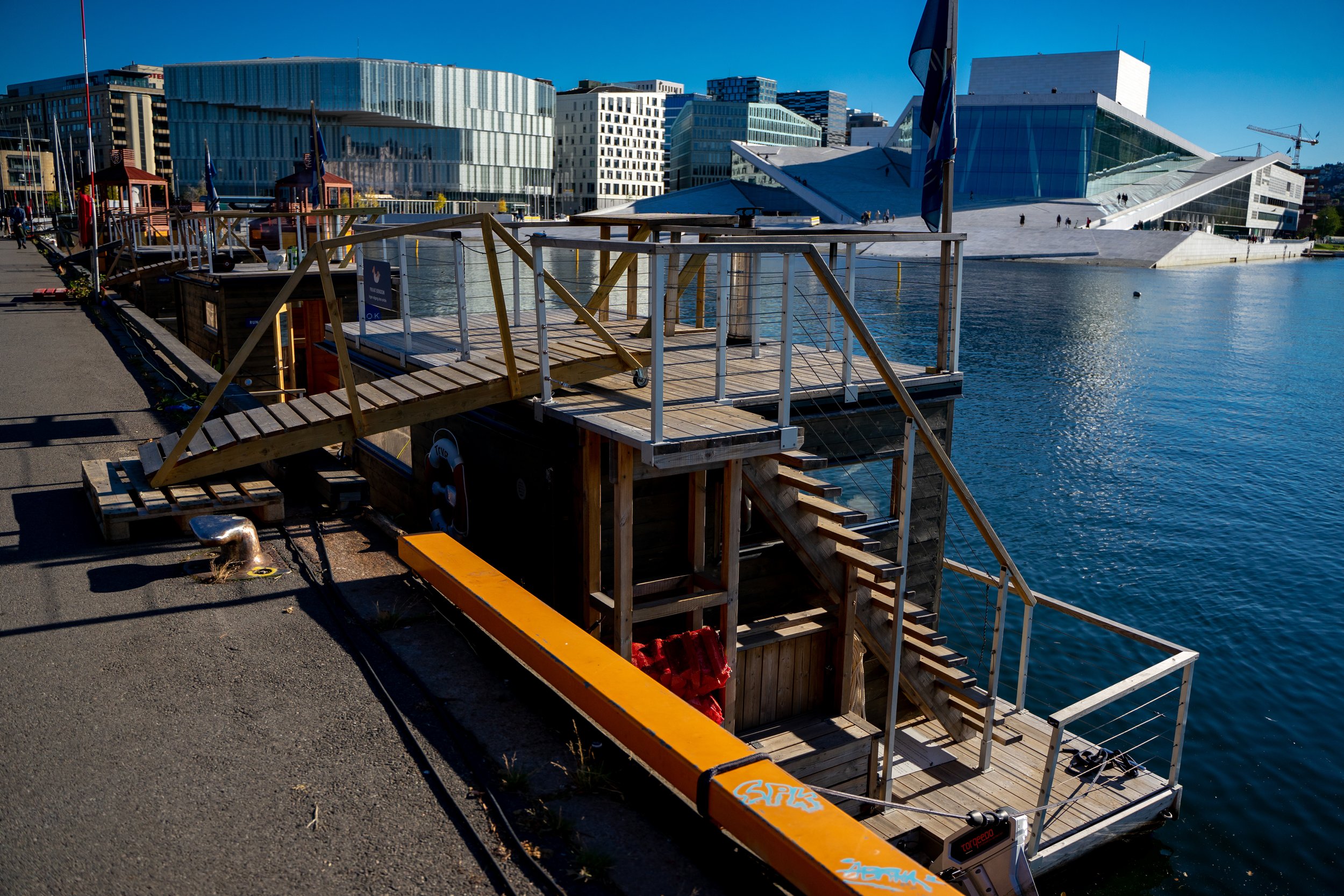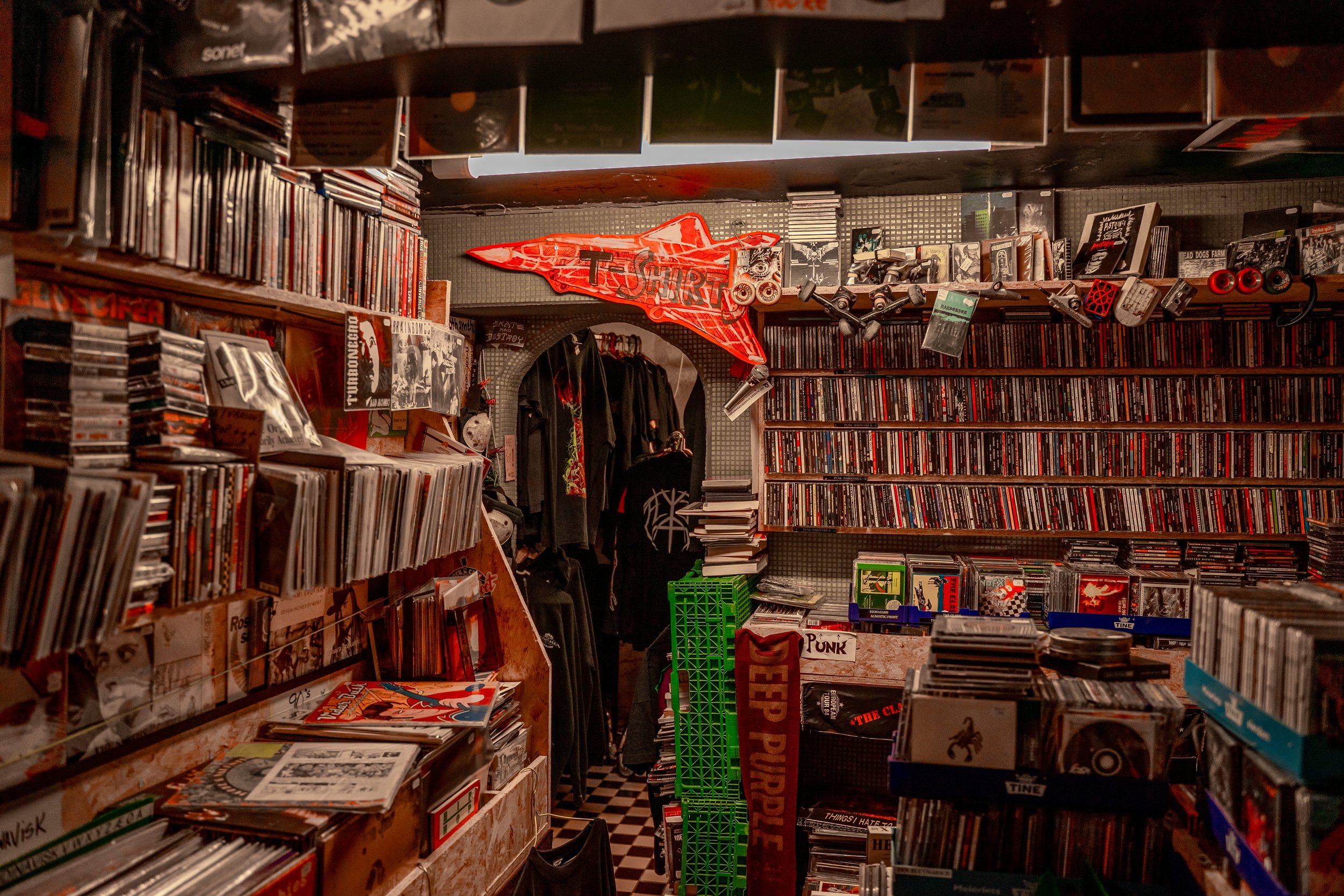Oslo
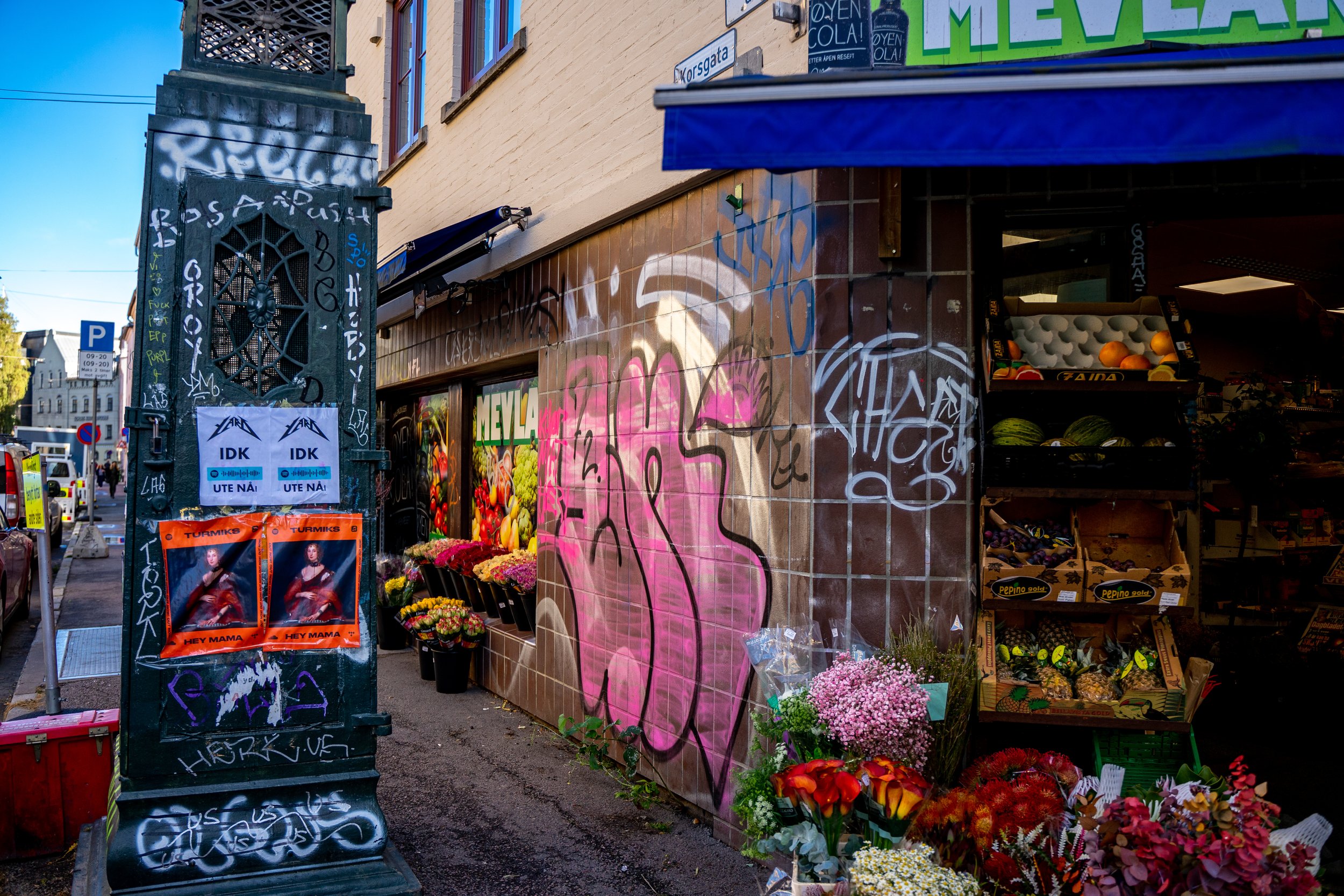
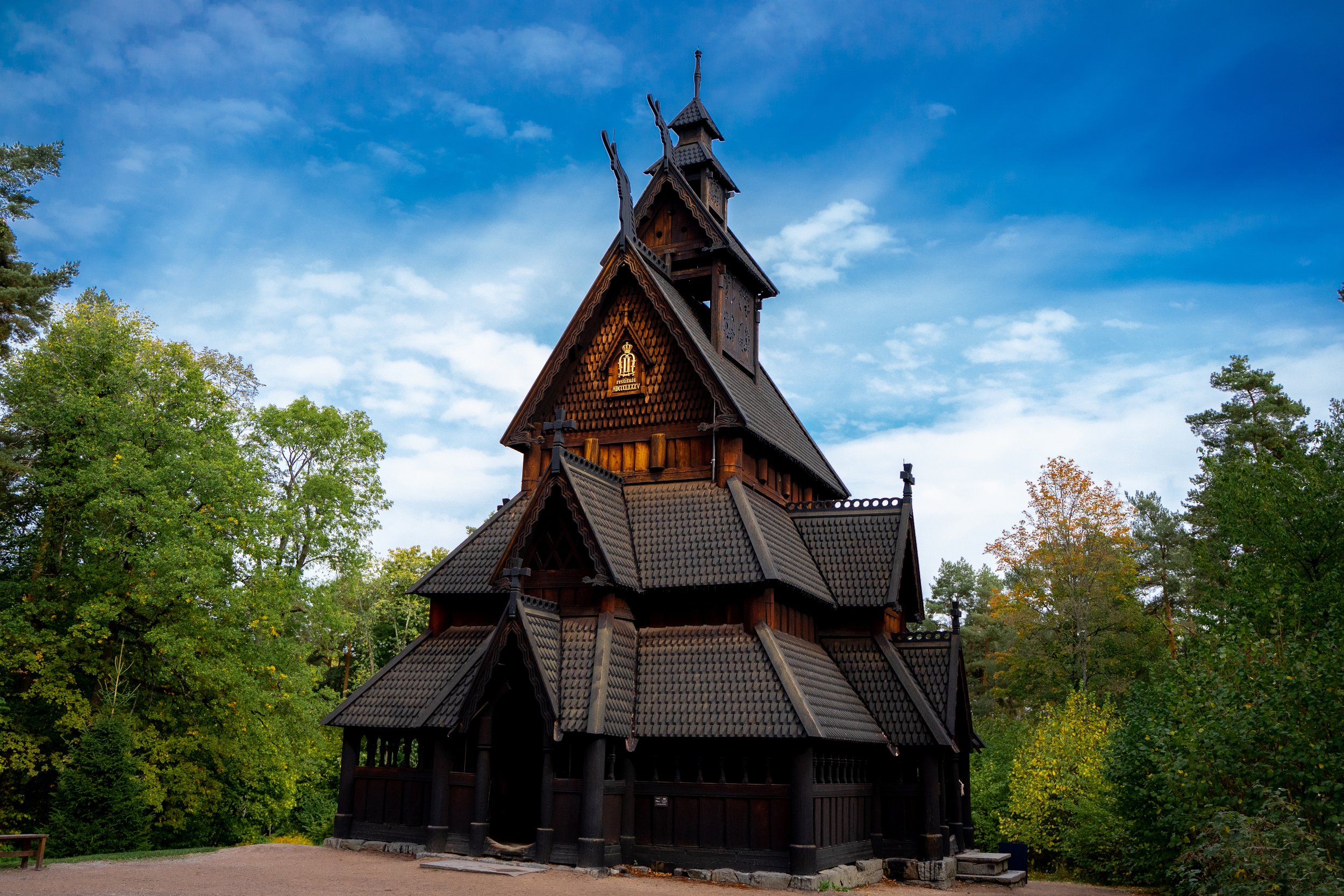

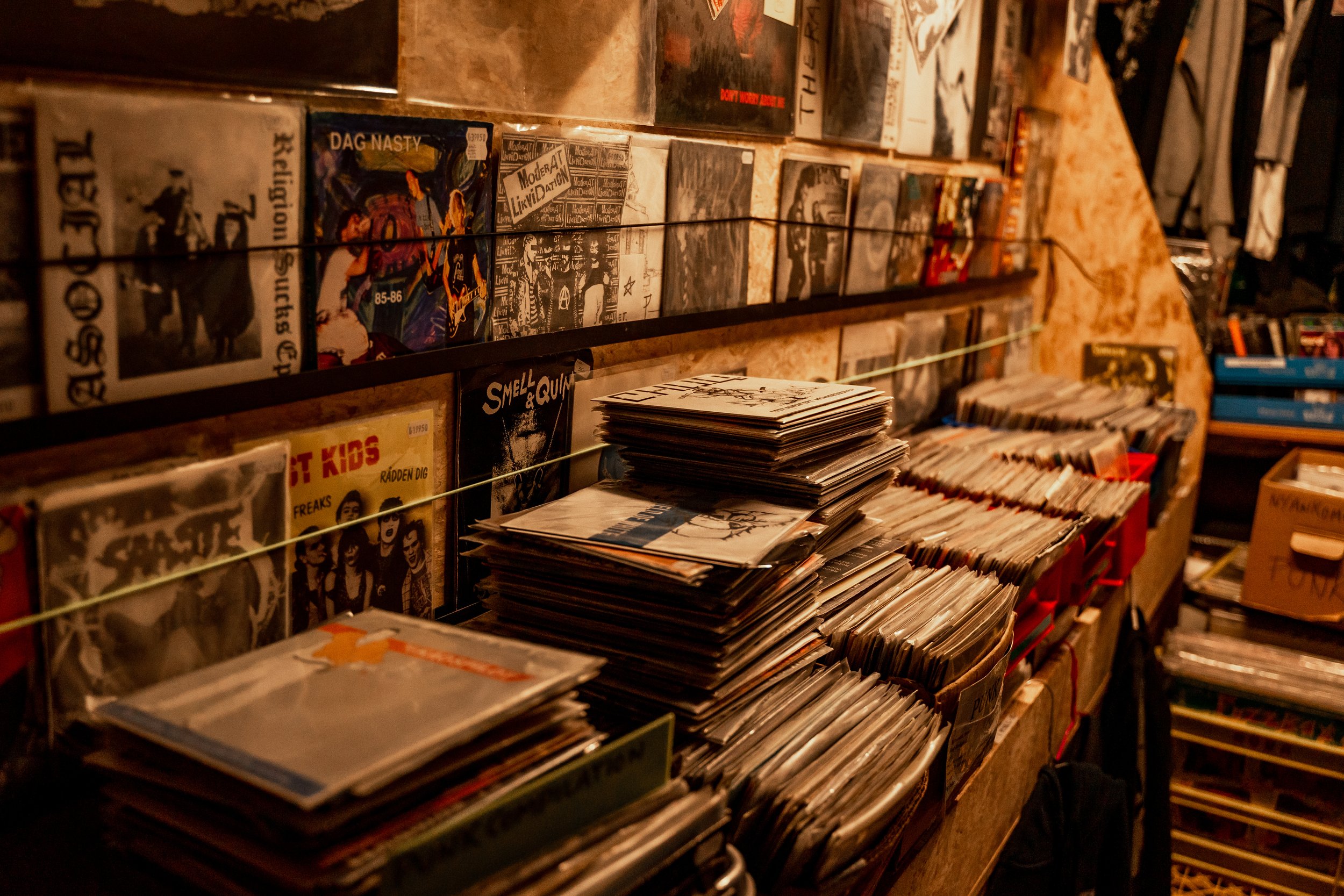
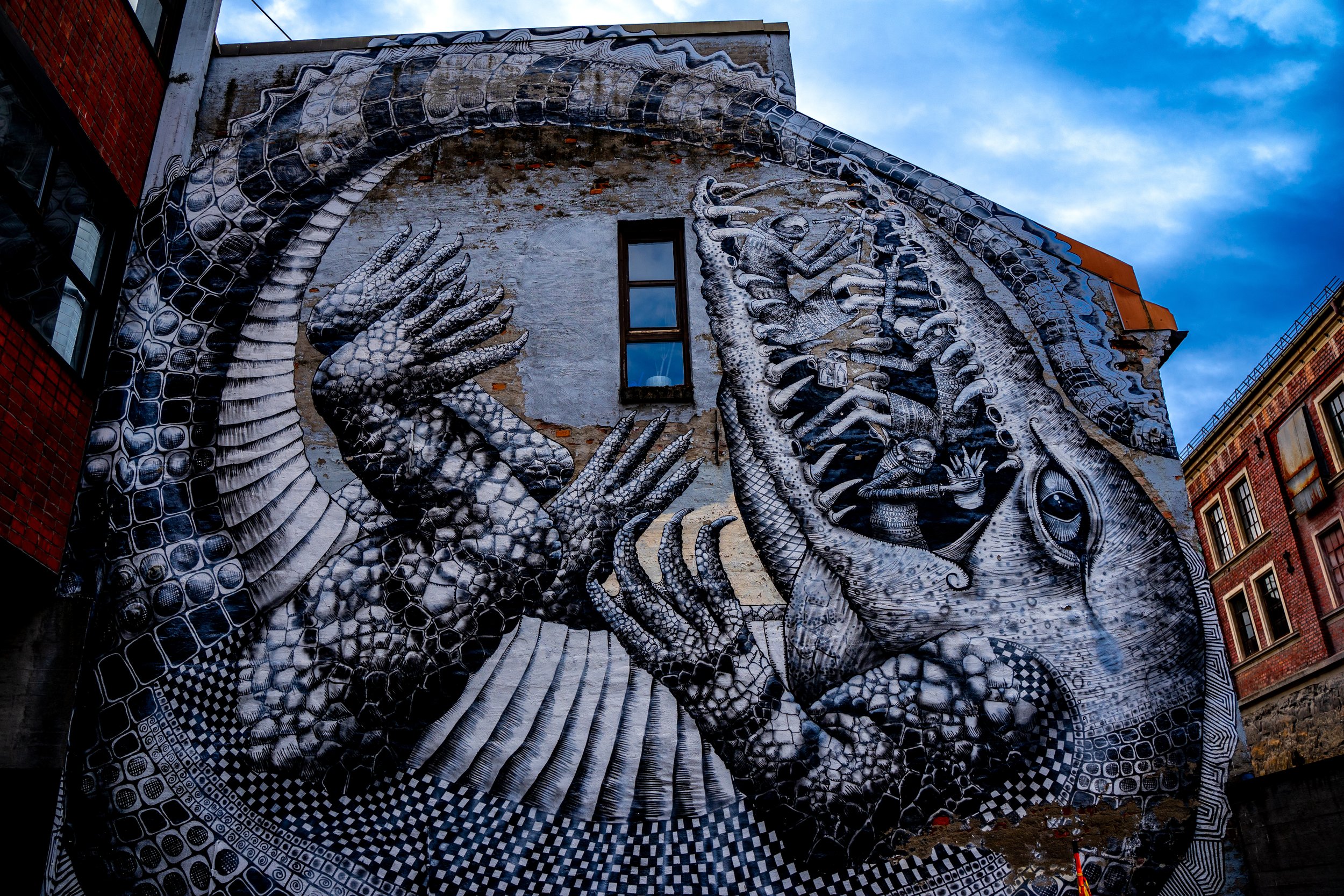

Oslo is famous for its clean minimalist architecture, green spaces and cultural history but as a city it also possesses an alternative and creative side. You will discover a deep-seated history of Black Metal music running through its record stores and bars, its streets are graffitied with outstanding murals, local food markets offer a real taste of Norway and its neighbourhoods are overflowing with individual retailers and independent eateries. If you are planning to visit, then I would highly recommend a minimum stay of at least 48 hours as there is so much to discover! So, let’s dive straight in.
Day One
Floating Saunas
If you are brave enough, start your first day with an invigorating dip in the Oslofjord! Located by the harbour you will find the KOK and Bademaschinen floating saunas, which are open all year round, providing stunning views across the water to the Opera House directly opposite.
The combination of the cold water and the hot sauna is an exhilarating way to wake up before a big day of exploring. KOK also offer tours across the fjord in their Norwegian style cabins, these last around three to four hours and are individually curated by the captain.
Oslo Opera House
Feeling a bit more awake?
Next, I would recommend heading over to the very epicentre of the capital to explore Oslo’s famous Opera House. Designed by Norwegian architecture firm Snøhetta the impressive white granite structure seems to rise up from the fjord creating a unique urban space. It’s the quintessential subject to photograph with its unusual angles and clean lines, especially against a crystal blue sky such as we were lucky enough to experience.
Take a stroll up to the roof of the building to enjoy panoramic views across Oslo and the fjord. It’s also a great evening spot to watch the sun go down!
The Norwegian Museum of Cultural History
From the Opera House make your way to City Hall Pier to board the ferry to the Bygdøy peninsula to travel back in time and visit the Norwegian Museum of Cultural History. The ferry departs every 30 minutes from City Hall Pier 3 between the months of March and October.
Make sure to get off at the first stop ‘Dronningen’ for the Norwegian Museum of Cultural History. It’s a short walk between departing the boat and the museum, which takes you through a quaint little neighbourhood. As soon as you arrive, I would recommend a stop in their café for a delicious cinnamon bun and a coffee before you enter the museum.
The museum is Norway’s largest cultural history repository and contains many collections of prehistoric and medieval artifacts. It includes 160 historic buildings in picturesque open-air surroundings and the magnificent Gol Stave Church, which was the main reason we visited. The church originates from the year 1200 and is beautifully carved with dragon and plant motifs. Today stave churches are almost exclusively found in Norway and are considered among the most important examples of medieval architecture in Europe.
Vippa Street Food
Getting hungry? Once back at City Hall pier, head over to Vippa Street Food, which is around a 15-minute walk away and located adjacent to the Oslofjord. Vippa is an independent food market and a community hub harbouring various local street-food traders all under one roof. After a lot of deliberation, we went for the classic Norwegian fish and chips from Fra Dypet who serve homemade seafood dishes with a focus on sustainability. It was extremely good quality and if the weather is nice, you can sit outside and enjoy gazing out across the fjord whilst enjoying your meal.
Akershus Fortress
Now you’re all set for an afternoon of exploring, so why not take a short walk to Akershus Fortress (pronounced Akershus Festning in Norwegian). The medieval castle was built during the reign of King Håkon V to protect Oslo and has, over many decades, withstood a number of sieges by primarily Swedish aggressors. The fortress was then modernised by King Christian IV and converted into a renaissance castle and royal residence. Guided tours are available, but we enjoyed wandering around the grounds by ourselves and appreciating its symbolic value for Oslo.
The Opera Quarter
Next let’s head back towards the Opera House to explore the waterfront and the neighbouring streets more extensively. This locality used to be an industrial dockland district, which has now been redeveloped into a very stylish and modern neighbourhood known as ‘The Opera Quarter’.
It’s a cool spot to wander around and marvel at the uniquely shaped architecture of the multi-purpose high rise buildings. I enjoyed the architectural style and one of my favourite photographs I shot whilst in this area was of a home, which had access by their back door, to its very own speed boat. Can you even imagine living here?
If you are ready for an afternoon coffee and/or pastry then swing by Godt Brød to enjoy its organic bakes and delicious hot drinks. We opted for the Fylte Boller, which was sweet bread with vanilla and berry jam washed down with a warming cup of tea.
Neseblod Records
For our final stop of the day before dinner, we’ll make our way northeast over the train lines to find the iconic Black Metal record store – Neseblod Records (translating to Nosebleed Records). Appearing pretty nondescript from the street, Neseblod not only has one of the greatest collections of black metal records in the world, but its basement is also home to the renowned black metal museum.
As you walk in you will be amazed at the colossal scale of vinyl, CD’s and memorabilia which fills every space of this tiny shop. You could spend hours alone just flicking through the records and CDs on the main floor before heading down the spiral staircase into the underbelly of Black Metal. The basement documents objects from the genre’s early days, including rare collectable items, memorabilia and of course the iconic Black Metal lettering written upon its walls.
On the site where Neseblod is now, there used to stand another acclaimed black metal store called Helvete (translating to Hell) which was the first ever record store of this genre. Opened by the Mayhem guitarist “Euronymous” in 1991 it only operated until 1993, but in those few short years it provided a place for black metal musicians and fans to gather and ultimately became known as the founding epicentre of Black Metal. The store was brought back to life in 2013 by Kenneth Nilsen, which started out as his personal record collection and has grown exponentially from there.
Vaterland Bar
After soaking up as much Black Metal history as you can manage, head over to Vaterland which is a craft beer and Pizza; Rock, Punk and Metal joint. Named after the area where it is located, Vaterland is a known alternative spot and gig venue which serves up delicious pizza and has a great selection of local Norwegian beers to try. I ordered their signature Pizza Pils which was on tap and as their motto states “Eat Pizza, Hail Satan”.
Day Two
Haraldsvaffel
I can’t think of a better place to kick off day two than at Haraldsvaffle in the heart of Grünerløkka. This store has a unique story, starting as it did in 2013, when owner Jonathan Larsson began selling waffles on a weekend to the community from his bedroom window. The popularity for his delicious waffles spread across the city and he eventually opened his first bricks and mortar store in Grünerløkka.
I loved the design of this eatery with its loud colour palette and the menu includes a quirky range of sweet and savoury options including the local’s favourite sweet brown cheese. Although, I would recommend asking to sample a piece before you order as it’s definitely an acquired taste! We weren’t 100% sure on it so opted for the straight up traditional Nugatti (Norway’s take on Nutella) and whipped cream, which you really can’t go wrong with for a glorious breakfast!
Grünerløkka
Spend some time wandering around the district of Grünerløkka, which still holds on to an underground atmosphere and is filled with cool independent boutiques, vintage stores, art galleries, cosy cafes and one-off eateries. The neighbourhood has a true bohemian feel to it and embraces Oslo’s counterculture, with many creatives and artists living in this area (who included before his death, the former painter Edvard Munch).
I would recommend checking out the streets around Markveien to explore the independent stores and vintage shops and take a walk through Birkelunden Park, which is a great spot to hangout in the summer months.
Syverkiosken Hotdogs
Our next stop has to be Syverkiosken which is a landmark for Oslo locals. Positioned on the edge of the northern most part of Grünerløkka it serves up some of the best hotdogs around! There used to be more than 40 of these traditional hotdog kiosks in the city but this is the last one standing, so why not sample their unbeatable homemade family recipes which have been so popular with the residents of Oslo for the past 40 years. The special is their signature Viennese boiled sausage with all the toppings including potato salad, then enveloped in a potato bread wrap to keep in all the goodness! They were actually so delicious, as soon as we had one, we had to order another straight away. No wonder there’s always a queue here, it’s one of those ‘hole in the wall’ places which really can’t be missed, if you want to taste a bite of the real Oslo.
Mathallen
Take a stroll south down by the side of the river until you reach Mathallen. This is a beautiful indoor food hall which houses a range of the very best small-scale Norwegian food traders and is the perfect place to grab a second lunch if you have room or to enjoy a beer, coffee or a pastry!
The amount of food on offer is unbelievable with more than 30 speciality independent sellers. We opted for the traditional plum crumble from The Cupcake & Pie Co. which was possibly one the best things we ate whilst in Norway!
Phlegm Street Art
A five-minute walk further south from Mathallen and located on the wall of a car park just off Brenneriveien, you will discover the gigantic Crocodile street mural by Sheffield artist Phlegm. Phlegm has a very distinctive illustrative style reflected through his work and this piece is no different! You can see the incredible amount of detail and time that has gone into this large-scale mural as the crocodile wraps around the entire building with its size and volume. It’s one of Oslo’s alternative sights, which really can’t be missed!
Ingens Gate
Just around the corner you will find Ingens Gate also termed as ‘Nothing Street’, which is a vibrant side street leading to a footbridge crossing the Akerselva river. Pretty much every wall of this alleyway is covered with beautiful street art and a gigantic chandelier hangs from above, whist local artists work in the surrounding studios. It really is a hidden gem and a great place to photograph! Plus, the music venue Blå is located here, which you might want to pop back to later.
Hausmania
A short walk from Ingens Gate you’ll find Hausmania which is a self-managed social centre and cultural house featuring practice rooms, exhibitions, a vegan café and cinema. You have to be a member to go inside, but it’s still great to see the external graffitied walls of this truly unique experimental hub of art and culture.
The Vigeland Sculpture Park
Next on our walking tour is Vigeland Sculpture Park, which takes around 45-minutes to get to on foot from the Grünerløkka area. Situated in Frognerparken, which is Oslo’s largest public park, you will find the life work of Gustav Vigeland, which embodies more than 200 sculptures representing the cycle of human life and reflecting all its varying emotions.
Including probably the weirdest statues you will ever see, they celebrate life in all its strange and wonderful forms including showcasing the emotions of anger and violence. Along the footbridge you will find a range of granite sculptures which depict a series of emotions including ‘Man Attacked by Babies’ and ‘The Angry Boy’.
Then ahead of you, you will find the impressive monolith which includes 121 humans and features adults and children representing the different stages of life, it’s definitely an unusual attraction!
Illegal Burger
Head back into town for homemade charcoal grilled burgers and thick cut fries at Illegal Burger. It’s a cool little spot with a great atmosphere to get a quick and tasty meal. There are loads of options on the menu including wonderful vegetarian offerings and you can even double up on your patties if you are feeling extra hungry. I’d highly recommend a visit here if you are a burger fan like me!
Kniven
To end the night wander up to Kniven which is a short two-minute walk away. Here you’ll discover a great little metal bar to end your Oslo adventure and reminisce on all of the places that you have discovered.
Where to Stay
We stayed in the BJØRVIKA Apartments located in the Barcode Project along Oslo’s waterfront, which is an extensive area of redevelopment fashioned by some of Scandinavia’s best architects. The location was perfect, being only a 10-minute walk away from the main city centre, Oslo’s Central Station and the Opera House. The apartment itself was modern and spacious, with great views from the balcony, plus you could even go up to the roof to take in the cityscape and skyline. I would definitely recommend it for a short term stay when visiting.
If you are thinking of booking a stay please consider supporting the site and using my affiliate link below.
The Alternative Guide is reader-supported, please note I may earn commission through links on my site at no additional cost to you.
I hope that you enjoyed exploring Oslo as much as I did and that this alternative guide has introduced you to a few unusual places, which you may not have thought to visit.
Make sure to tag me on Instagram @thealternativeguide_ if you visit any of the places I have recommended or if you find any other off-beat locations, as I love seeing the places you have visited and sharing them with the wider alternative travel community!

